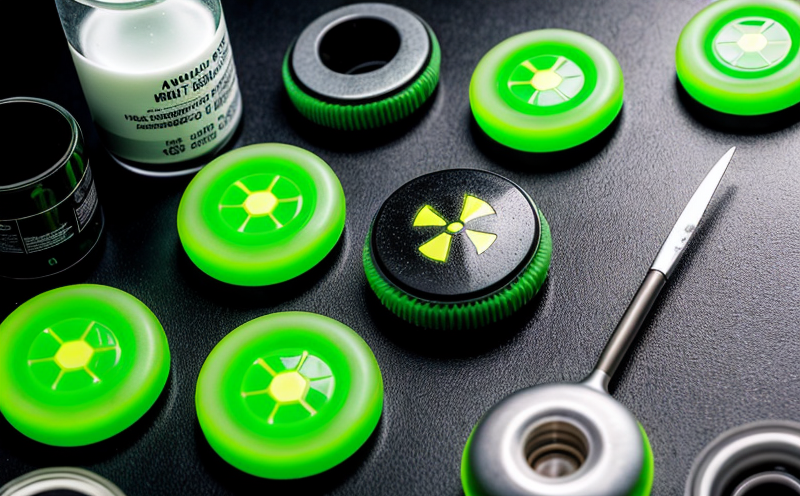ISO 34270 Gamma Emitting Radionuclide Testing in Pet Foods
The ISO 34270 standard provides a robust framework for detecting and quantifying gamma-emitting radionuclides, which are of significant concern in pet food products. This testing is crucial because it ensures that the food does not contain harmful levels of these radioactive substances. The standard applies specifically to pet food intended for consumption by dogs and cats, aiming to protect animal health and well-being.
Gamma-emitting radionuclides are a type of ionizing radiation produced when unstable atomic nuclei decay spontaneously into more stable forms. These radionuclides can be present in pet foods due to various factors such as contamination during production, packaging materials, or even the environment where food is sourced and processed.
The testing process for gamma-emitting radionuclides involves several critical steps. Samples are first collected from the pet food batch under controlled conditions to ensure accuracy. These samples are then prepared according to ISO 34270 guidelines, which may include drying, grinding, and homogenization processes.
The testing itself is carried out using gamma spectrometry, a technique that measures the energy of emitted gamma rays from radioactive substances. This method allows for precise quantification of specific radionuclides identified in ISO 34270. The most commonly tested radionuclides include Uranium-238 (U-238), Thorium-232 (Th-232), and Potassium-40 (K-40).
Once the radionuclide content is determined, the results are compared against regulatory limits set by international standards such as ISO 34270. The standard specifies maximum allowable concentrations for gamma-emitting radionuclides to ensure that pet food meets safety requirements.
The importance of this testing cannot be overstated, especially given the potential health risks associated with excessive exposure to ionizing radiation. By adhering to ISO 34270 guidelines, laboratories can provide reliable and accurate test results that help manufacturers maintain compliance with global regulations.
Compliance with international standards like ISO 34270 is not only essential for regulatory purposes but also enhances the reputation of pet food brands. Consumers are increasingly aware of the need to avoid products containing harmful substances, making it imperative for producers to demonstrate their commitment to quality and safety.
Furthermore, this testing process supports sustainable supply chains by ensuring that all raw materials used in pet food production meet strict safety criteria. This proactive approach helps prevent contamination issues that could lead to recalls or other adverse events.
Customer Impact and Satisfaction
Adopting ISO 34270 gamma emitting radionuclide testing provides significant benefits for pet food manufacturers, ensuring compliance with international standards and enhancing brand reputation. By demonstrating a commitment to safety, transparency, and quality, companies can build trust with consumers.
Clients benefit from the peace of mind that comes with knowing their products are free from harmful radionuclides. This assurance is particularly important for brands aiming to appeal to health-conscious pet owners who prioritize safety above all else. The process also ensures consistent product quality, which can lead to increased customer satisfaction and loyalty.
For R&D engineers and compliance officers, ISO 34270 testing offers valuable insights into potential contamination risks throughout the supply chain. This information allows for targeted interventions to mitigate these risks proactively, thereby reducing the likelihood of recalls or other adverse events. Additionally, it supports continuous improvement efforts aimed at enhancing product safety.
Moreover, this service enables procurement teams to source ingredients from suppliers who adhere to stringent quality and safety standards. By selecting partners committed to ISO 34270 compliance, companies can ensure that every component of their pet food products meets the highest safety benchmarks.
International Acceptance and Recognition
- ISO 34270: The standard is widely recognized for its comprehensive approach to gamma-emitting radionuclide testing in pet foods. It has been adopted by regulatory bodies across multiple countries, including the United States, Europe, and Asia.
- ASTM E1658: While not a direct equivalent, ASTM E1658 is another relevant standard that can be used alongside ISO 34270 for comprehensive testing. It provides additional guidance on sample preparation and analysis.
- EN 14292: This European standard aligns closely with ISO 34270, ensuring consistency in methodology across different regions. Its adoption reflects the growing global consensus around stringent safety measures for pet food products.
The acceptance of these standards is driven by the increasing awareness of radionuclide contamination risks and their potential impact on animal health. Regulatory authorities worldwide are implementing stricter regulations to protect consumers, leading to greater demand for reliable testing services that adhere to international best practices.
Competitive Advantage and Market Impact
Incorporating ISO 34270 gamma emitting radionuclide testing into your quality management system offers several competitive advantages. Firstly, it demonstrates a proactive approach to ensuring product safety, which can differentiate your brand from competitors who may not prioritize this aspect as much.
By adhering to these standards, you position yourself as a leader in the pet food industry, appealing particularly to consumers who value high-quality and safe products. This commitment can translate into increased market share as customers choose brands they trust for their pets' health and well-being.
The service also supports sustainable business practices by helping companies maintain compliance with international regulations. This not only minimizes the risk of legal issues but also fosters a positive reputation among stakeholders, including investors and partners.





